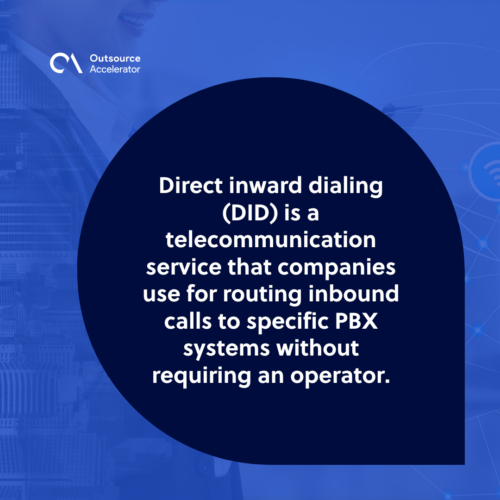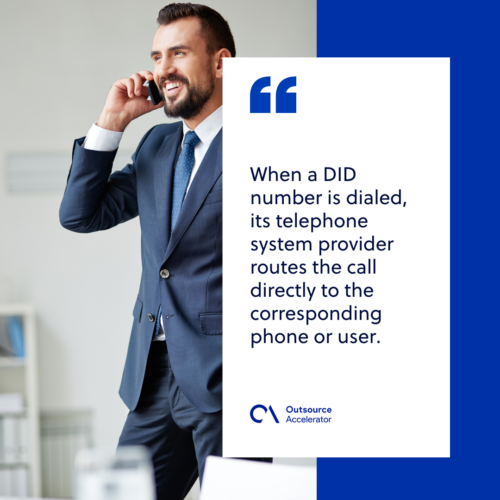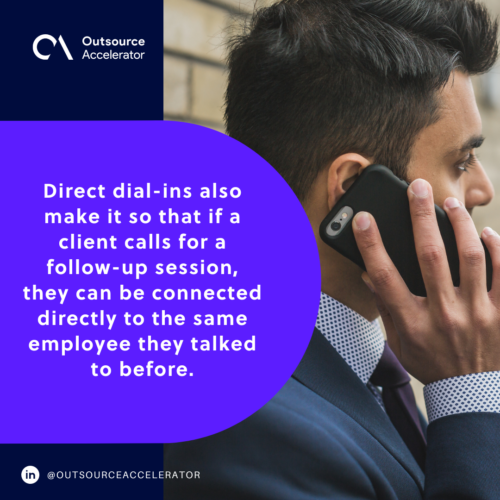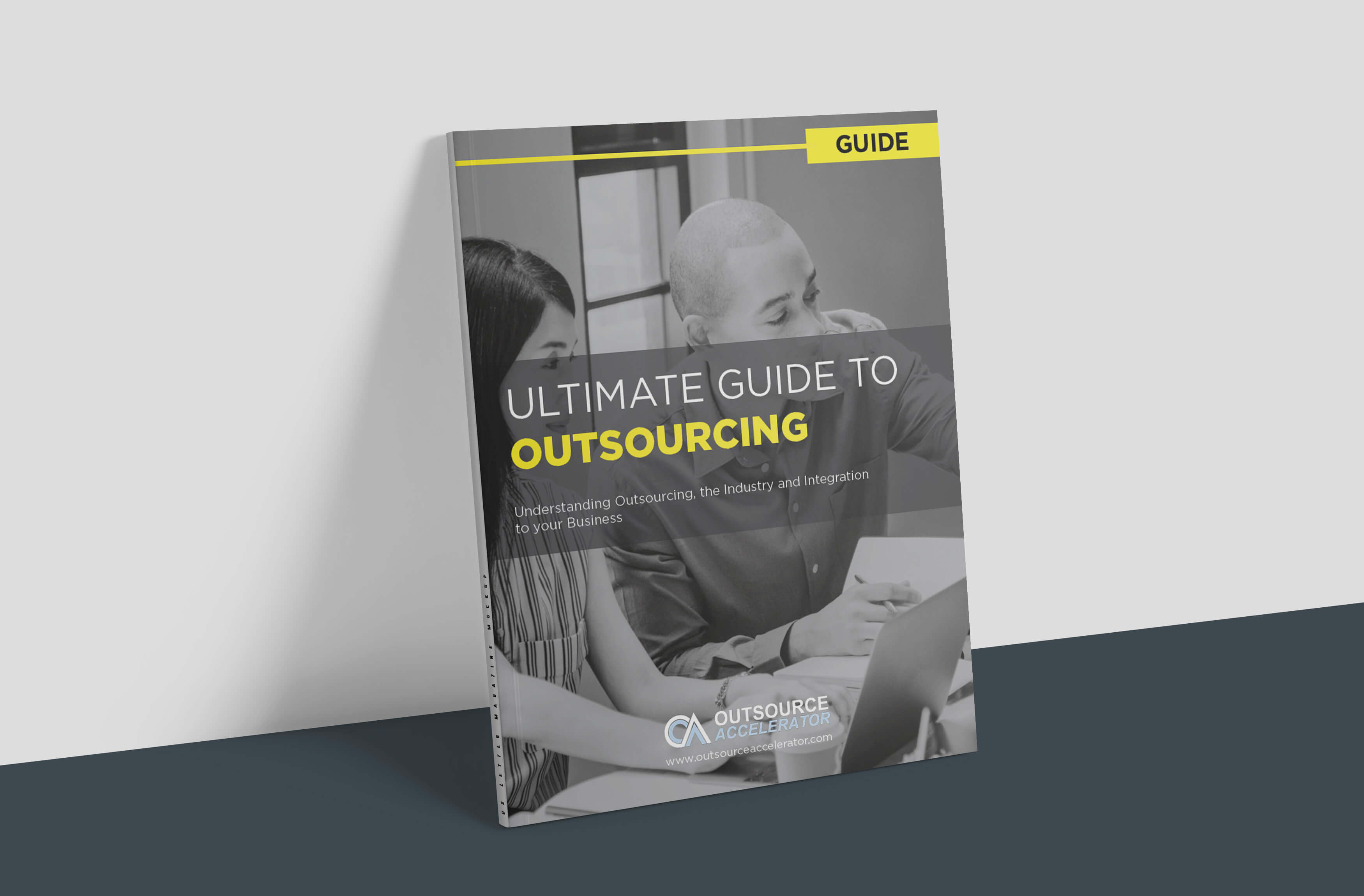Direct Inward Dialing (DID): What you need to know

Direct Inward Dialing, or DID, is a telecommunications service employed by numerous companies for the purpose of routing inbound calls to specific Private Branch Exchange (PBX) systems without requiring a receptionist or auto-attender.
DID may also be referred to as “direct dial-ins,” “direct-dial numbers,” or “direct dial.”
This service allows businesses to allocate individual direct dial numbers to specific extensions within their phone system.
The feature enables incoming calls to reach the intended recipient directly without needing an operator to route them.

What is a DID number?
A DID number refers to any phone number that can be bought online. This virtual number acts as a shortcut phone line, going directly to a company’s extension via the Internet.
Companies attain direct-dial numbers by buying them from a telephone service provider.
DID numbers allow them to offer clients individual phone numbers for each employee or department within their company without requiring a physical line into the PBX for each connection.
Upon calling a direct-dial number, clients will automatically be connected to the extension that corresponds with that number.
How Direct Inward Dialing differs from Direct Outward Dialing (DOD)
Both DID and DOD are services provided by local phone companies, but they differ in a major aspect – their purpose.
DID provides a company with a block of telephone numbers for calling its PBX system.
DOD, on the other hand, allows subscribers within a company’s PBX system to directly connect to outside lines.
How Direct Inward Dialing works
When a DID number is dialed, its telephone system provider routes the call directly to the corresponding phone or user.
DID can work on Voice over Internet Protocol (VoIP), with a Public Switched Telephone Network (PSTN), and for faxing.
VoIP
VoIP is a technology that allows businesses to make and receive calls using the Internet instead of analog phone lines or in-office hardware.
With VoIP, businesses can use direct-dial numbers with Session Initiation Protocol (SIP) trunking. With SIP trunking, trunk line connections are not physical lines but virtual links across broadband that are available as needed.
DID on VoIP is highly scalable and flexible compared to analog phone systems.
For example, if you need to add a large amount of new hires to your existing phone system, you can usually do that directly from the software interface.
This means that you would not need to call the telephone service provider to have them install extra physical trunk lines to your company’s PBX.
VoIP also opens up the possibility of having a virtually unlimited number of calls simultaneously.
PSTN
PSTN is the classic circuit-switched telecommunications network. It allows interaction through voice from various locations, and old-fashioned direct dial-ins use it.
A telephone service provider connects a set of trunk lines to a company’s hosted PBX, which requires leasing and installing copper wires called Primary Rate Interface (PRI) trunks.
The provider then assigns a block of phone numbers to clients as their DID numbers.
This is what happens when a client calls a company:
- Inbound calls are forwarded to a company’s PBX via the trunk line.
- The dialed number and calling party are provided when the call arrives at the PBX.
- The PBX routes the inbound call directly to the desired phone extension.
Fax
You can use DID for faxing by connecting your DID line to a fax machine or by assigning a block of DID numbers to a computer with a fax server.
Here are some reasons for which companies do this:
- It allows for multiple fax numbers to be linked to a particular machine or even multiple devices.
- Employees can be assigned individual fax numbers, which means inbound faxes can be routed to a specific person via the printer in their work area.
- Many DID fax servers can convert faxes to standard image files and route them to the recipient’s computer or cell phone.
- Employees wouldn’t need to wait for faxes anymore, and remote employees could receive their faxes without anyone routing them to them.

Benefits of Direct Inward Dialing
We’ve established what direct inward dialing is and how it works. Now, let’s address the why: Why do businesses choose to have direct dial-ins installed? What benefits will it grant you?
There are many impactful advantages of using DID. Among them are these three:
1. Cost savings
Physical trunk lines and individual phone lines for each employee can both be quite expensive. But DID can reduce – or even eliminate – the need for these, which will undoubtedly save you money, time, and effort.
DID also allows for long-distance calls without any additional fees, including calls to a different continent.
2. Better customer experience
With DID, there will be no need for a middle man – whether a receptionist or an auto-attender – between the caller and the employee that they desire to talk to.
Your clients won’t have to wait in queue, go through a pre-recorded menu, or keep getting transferred to different lines.
With direct inward dialing, companies can provide direct dial phone numbers to employees, making it easier for clients to contact the right person.
This is particularly advantageous for VOIP phone systems, as direct inward dialing services seamlessly integrate with modern technologies, enhancing call management capabilities.
3. Personalized service
DID provides a more personalized experience for your clients. Since they will be directly connected to the employee that they require, this will make them feel like their needs are being personally catered to.
Direct dial-ins also allow clients to call for a follow-up session and be connected directly to the same employee they talked to before. This means that they can pick up their conversation right where they left off.
In addition, you can provide an even better service for VIPs.
If a high-priority person calls your company, they can be connected directly and instantaneously to the appropriate person to handle the call. You won’t catch yourself letting VIPs sit in the queue.
4. Flexibility
Companies can enjoy the flexibility that DID provide. This is because they can call from anywhere. They would not need to rely on, buy, and maintain physical phone lines for telecommunication.
Further, DID’s inbound routing features offer great flexibility. You can set up your devices to forward calls to other employees or to your mobile phone.
In addition to direct dialing, DID offers call forwarding options, allowing businesses to forward calls to other extensions or phone numbers as needed.
This flexibility ensures that incoming calls are always answered, even if the primary direct phone number is unavailable.
By using direct dial numbers, companies can improve customer service efficiency and streamline their communication processes.

Direct Inward Dialing: What you learned
Direct inward dialing is a telecommunication service that companies use for the routing of inbound calls to specific PBX systems without the need for an operator.
It can be done on VoIP, where trunk lines are virtual because of SIP trunking, with PSTN, which is used for old-fashioned direct dialing and faxing.
Direct dial benefits companies through cost savings by reducing the need for physical trunk lines and individual phone lines for each employee. With DID, long-distance calls can be made without any additional fees.
Additionally, direct dial-ins benefit both companies and clients through the better customer experience and personalized service they can provide.
Direct inward dialing is also beneficial because of its flexibility, including the ability to make calls from anywhere and inbound routing features.
Upon reading this article, you can understand why it is in the best interest of businesses to utilize direct inward dialing.
Start your company’s journey with direct dial-ins by looking up local telephone service providers and filtering out the one that best suits your company.
After the installment of DID, you can start reaping its benefits.







 Independent
Independent




